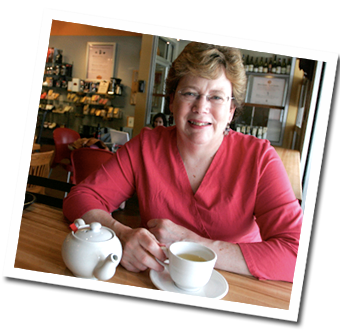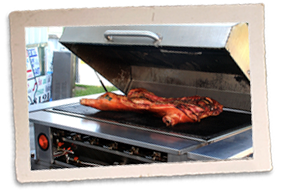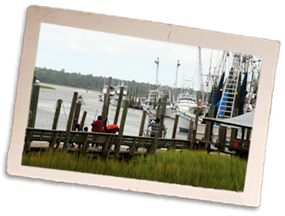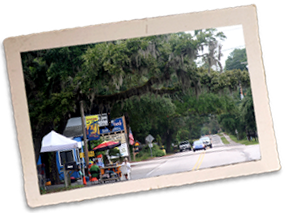 |
|
Articles & Essays
"Surprising discoveries about Southern holiday traditions"
Published 12/06/14
The News & Observer (Raleigh, NC)
|
As a lifelong North Carolinian, I thought I was fairly familiar with the myriad ways that Southerners celebrate all kinds of holidays. But when I began writing “Southern Holidays: A Savor the South Cookbook,” I realized I really had no idea.
Looking how Southerners celebrate pointed out that the South has always been more diverse than people have given it credit for. Jews, Sicilians, Greeks, Vietnamese and many others have long thrown their ingredients into the foods and celebrations in the region. And the South is becoming more varied every day.
I also realized that history and circumstances shape personal and regional traditions, and those are the kinds of cultural fun facts that I enjoy.
For example, I could make a case that the South is responsible for the spread of the Thanksgiving sweet-potato casserole across our great country. Sweet potatoes thrive in our soils without much work. We had them, so we used them. And when Southerners moved to other parts of the country, they craved that Thanksgiving tradition in their new homes.
I could have written a book three times as long as I did about all the ways we celebrate, and the history of those celebrations. Here are a few things I learned along the way.
Fruit for Christmas
A seemingly peculiar habit of many older Southerners has puzzled their children for decades – stuffing Christmas stockings with oranges and tangerines instead of toys.
This practice has strong roots in history and culture. In the early part of the 20th century, citrus fruit was a special treat for rural Southerners.
Southern port cities would receive ships bearing citrus fruit from Florida, and pineapples and coconuts from the islands. Usually they would arrive in the winter, and they were rare and costly delights – the kinds of things that, if you could afford them, you’d save for special occasions and guests.
Until the advent of railroads allowed faster shipping of perishables, these items did not spread far beyond the coasts. Even when the expensive fruit did arrive in rural Southern towns, they were once-a-year treasures.
In 1935, during the Great Depression, a dozen oranges cost about the same as or maybe a little more than 5 pounds of flour, according to the U.S. Census Bureau. Flour was a necessity; oranges were not. You can see how oranges would have been a special gift.
Satsumas, a variety of mandarin oranges, have been long grown and coveted in the Deep South. Their season is late October through February, so their peak falls right in the holiday sweet spot.
Hurricane Katrina in 2005 killed huge numbers of the trees in Louisiana, completely wiping out some farms and making the fruit even more cherished. In 2012, Hurricane Isaac also did widespread damage.
“Yes, they are a really big deal. Beloved,” says Judy Walker, food editor for the Times-Picayune in New Orleans. “Almost all the crop here is eaten locally, so they’re rarely shipped anywhere.”
The story “A Christmas Memory” by Truman Capote, about a childhood Christmas with his beloved cousin in 1930s rural Alabama, says she received “a sack of satsumas” and that it was her best gift.
Coconut cake
The tradition of the holiday coconut cake has similar roots. And besides being a rare commodity, a whole coconut is not very user-friendly. After draining the milk and whacking it open, then grating the white flesh (by hand in the days before food processors) it’s not hard to understand why coconut cakes were reserved for the holidays.
There’s one more factor involved: Southern weather.
Many traditional coconut cake recipes call for Seven-Minute Icing. It’s more like making candy than frosting, involving egg whites and corn syrup, and requiring the cook to beat the mixture over simmering water.
The 1975 edition of “The Joy of Cooking” says: “Just as in candy making, success with boiled icings depends on favorable weather and the recognition of certain stages in preparing sugar syrup.”
Seven-Minute Icing doesn’t come out well in high humidity. And about the only time that the pre-air-conditioning South didn’t have high humidity was in the winter.
Hanukkah
Between 1776 and 1820, more Jews were in Charleston, S.C., than in any other city in America, according to “Matzoh Ball Gumbo,” by Marcie Cohen Ferris.
The nation’s third-oldest synagogue, founded in the early 1700s, is in Savannah, Ga., and its Jewish food festival, Shalom Y’all, has been held every October for 26 years. (Asheville’s Hard Lox festival has been going on for 16 years.)
Food influences from all over the South began to be reflected in Jewish cooking as soon as the first Jews arrived, Cohen writes. Also, many immigrant Jews ran food stores and markets.
Southern touches certainly find their way into Hanukkah dishes. Sweet potatoes make great latkes – those crispy fried potato pancakes. Anything fried is good, since the holiday celebrates a miracle when temple oil sufficient for one day lasted instead for eight. Those New Orleans beignets have a place on the Hanukkah table, too.
There’s more. Green onions and cayenne pepper liven up matzo balls in Louisiana’s Cajun country.
In other parts of the South, you may find pecans in the kugel and brisket smoked and barbecued. It’s all good.
Old Christmas
In 1752, England adopted the Gregorian calendar, which shortened the year. On North Carolina’s Outer Banks, the English settlers didn’t get the word for decades, and had been blithely celebrating the holiday when they always had, on what, in the new calendar, was Jan. 6.
Outer Banks residents are an independent bunch, so the settlers decided that the old date was fine and continued to observe the holiday in January. That’s the legend, anyway, and if you’ve ever met determined residents of this isolated shore, you’d believe it.
Today, residents have found a place for both holidays. Christmas Day has become a time for family get-togethers. Jan. 6, called Old Christmas, is a big community party.
At one time, Old Christmas had a rather rowdy reputation, but it has calmed down in recent years. Naturalist Jan DeBlieu, in her book “Hatteras Journal,” describes a 1986 celebration that included an oyster shoot (instead of the usual rural turkey shoot), a band and dancing, and plenty of roasted oysters to eat.
The celebration doesn’t end until the arrival of Old Buck. Legend says that Old Buck was a wild bull that used to run amok on the Banks, and his spirit returns at each Old Christmas party in the form of a couple of folks dressed in an approximation of a bull outfit.
Old Buck runs around, makes adults laugh and scares a few children. But he’s also a reminder that this place, a finger of sand to which some of the toughest people in the world cling, is still a bit wild.
Make your own traditions
These are just three interesting aspects of Southern holiday celebrations. And I haven’t even touched on Easter, Thanksgiving or summer peach festivals. This season, savor your own ways of celebrating this festive time – they may become part of history.
Return to Articles & Essays |
|
|
|















